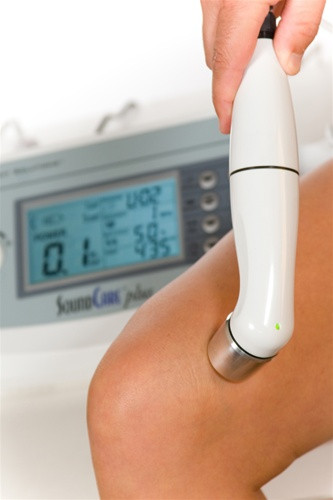 13th Nov 2015
13th Nov 2015
Ultrasound Therapy Options and Applications
Ultrasound is a popular treatment modality in physical therapy and with good reason. Studies have shown that ultrasound therapy can not only decrease pain but increase muscular function. When treating diverse patient populations it’s important to have tools that can work for a variety of patient problems. Ultrasound therapy can treat deep muscular problems like sciatica or closer surface injuries like ankle tendinopathy.
Effects of Ultrasound Therapy Treatments
Ultrasound therapy creates a heat effect is caused by the vibration of crystals within the sound head. The sound waves that pass through the skin cause a vibration of the local tissues. This vibration causes a deep heating within the deep tissues of the body. This deep heat enhances circulation by opening the blood vessels and allowing more oxygen to be delivered.
Ultrasound can also produce effects other than just the potential heating effect. Ultrasound therapy can also help tissue relaxation and aid in breaking down scar tissue. The increase in circulation can also be used to help reduce edema, inflammation and promote bone fracture healing.
Most therapeutic ultrasound machines come with a choice of frequencies, 1 or 3 megahertz, and now some units also have a choice of 1 cm or 5 cm sound head. These are great options to have when treating a variety of injuries. Let’s get technical a little bit, so we can see why these options are important and how they apply therapeutically.
A megahertz (MHz) is a unit of alternating current or electromagnetic (EM) wave frequency equal to one million hertz (1,000,000 Hz). Now, frequency when using ultrasound therapy is important because it can be used to treat pain relief or accelerate healing at the site of the injury. With therapeutic ultrasound, the higher the frequency used, the less the heat penetrates the tissues. For example, when treating an ankle, a therapist will set the frequency to 3 MHz because they site of the area being treated is close to the skin and a higher frequency is able to target the tissues needing treatment. When treating for deeper injuries such as low back pain, deeper penetration would be required, so 1 MHz would be used to effectively reach that area.
Popular Ultrasound Therapy Article: Ultrasound Therapy Indications and Contraindications
Once the needed frequency has been determined, the choice of sound head is of equal importance. In order for ultrasound therapy to work, it must have contact with the body, so if the sound head is too large for the treatment area, the unit won’t work appropriately. Again, consider treating an ankle at the joint which is small and rounded, if the ultrasound head is too large, it actually won’t reach most of the surface area of the ankle joint which won’t allow the ultrasound energy to disperse, meaning it will touch mostly air. This can cause the machine to detect no contact and may turn off.
From ankles to backs, reducing pain or accelerating healing, the versatility of ultrasound therapy is what makes it such a great tool. Also, ultrasound therapy is non-invasive as well as time efficient. It’s a great adjunct to many physical therapy treatment plans.
For more information about Ultrasound Therapy Machines and other popular modalities in Physical Therapy check out our blog at ProHealthcareProducts.com.






